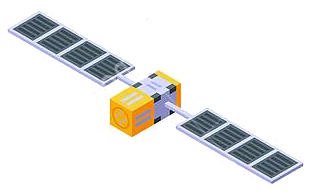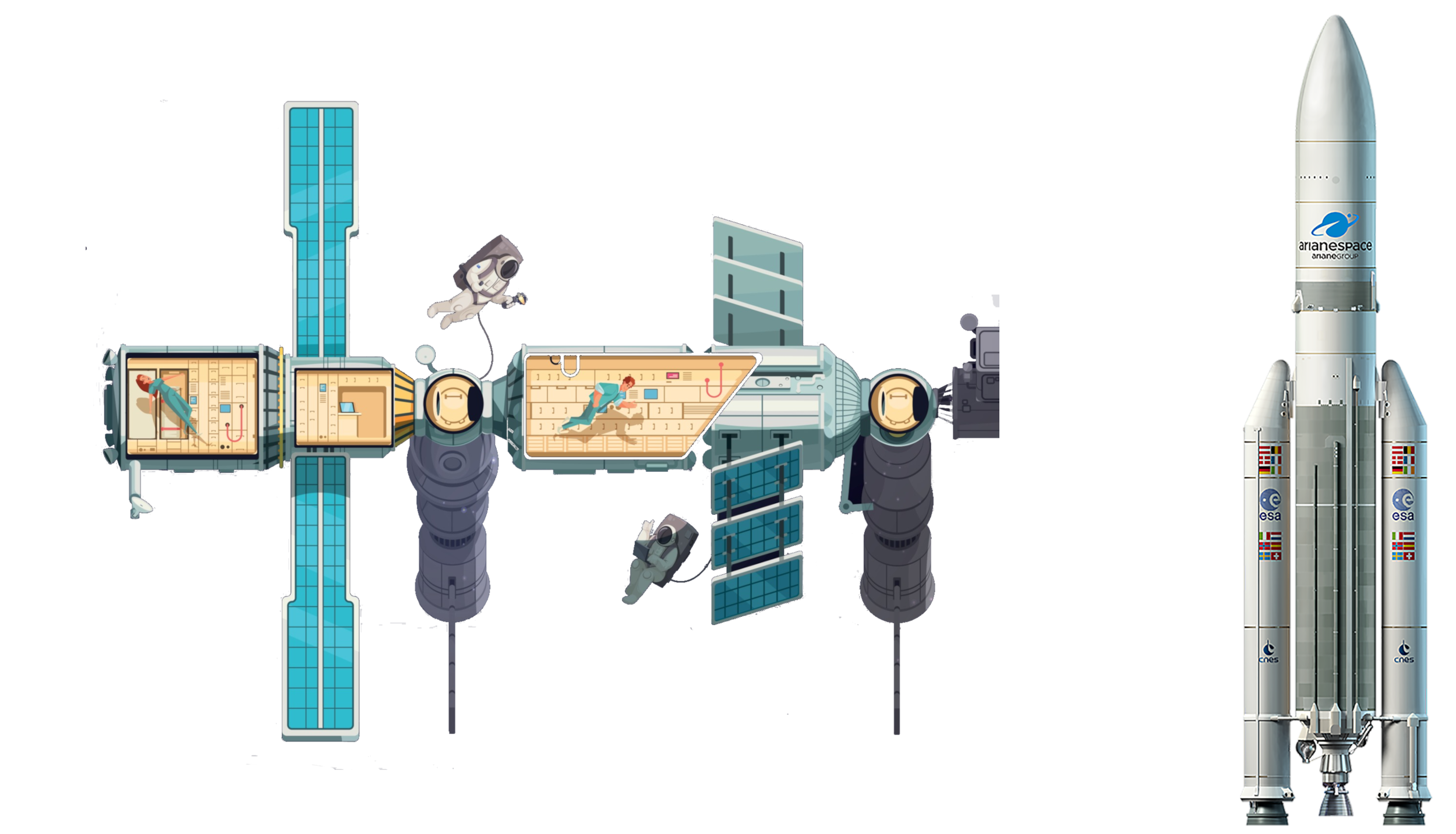


 Automobil
*Selbstfahrendes Kraftfahrzeug
Automobil
*Selbstfahrendes Kraftfahrzeug


 IT-Times
IT-Times

 Landwirtschaft, Forstwirtschaft, Viehzucht, Fischerei
Landwirtschaft, Forstwirtschaft, Viehzucht, Fischerei




 Militär,Verteidigung und Ausrüstung
Navigation Satellite System
Militär,Verteidigung und Ausrüstung
Navigation Satellite System

 Schiffe und Nautik
Schiffe und Nautik

 Transport und Verkehr
Transport und Verkehr
 Vereinigte Staaten
Vereinigte Staaten

 Wissenschaft und Technik
Wissenschaft und Technik

Das Global Positioning System (GPS; deutsch Globales Positionsbestimmungssystem), offiziell NAVSTAR GPS, ist ein globales Navigationssatellitensystem zur Positionsbestimmung. Es wurde seit den 1970er-Jahren vom US-Verteidigungsministerium entwickelt und löste ab etwa 1985 das alte Satellitennavigationssystem NNSS (Transit) der US-Marine ab, ebenso die Vela-Satelliten zur Ortung von Kernwaffenexplosionen. GPS ist seit Mitte der 1990er-Jahre voll funktionsfähig und ermöglicht seit der Abschaltung der künstlichen Signalverschlechterung (Selective Availability) am 2. Mai 2000 auch zivilen Nutzern eine Genauigkeit von oft besser als 10 Metern. Die Genauigkeit lässt sich durch Differenzmethoden (Differential-GPS/DGPS) in der Umgebung eines Referenzempfängers auf Werte im Zentimeterbereich oder besser steigern. Mit den satellitengestützten Verbesserungssystemen (SBAS), die Korrekturdaten über geostationäre, in den Polargebieten nicht zu empfangende Satelliten verbreiten und ebenfalls zur Klasse der DGPS-Systeme gehören, werden kontinentweit Genauigkeiten von einem Meter erreicht. GPS hat sich als das weltweit wichtigste Ortungsverfahren etabliert und wird in Navigationssystemen weitverbreitet genutzt.
Die offizielle Bezeichnung ist „Navigational Satellite Timing and Ranging – Global Positioning System“ (NAVSTAR GPS). NAVSTAR wird manchmal auch als Abkürzung für „Navigation System using Timing and Ranging“ genutzt. GPS wurde am 17. Juli 1995 offiziell in Betrieb genommen.
Die Abkürzung GPS ist inzwischen so sehr etabliert, dass sie umgangssprachlich, zum Teil sogar fachsprachlich, als generische Bezeichnung oder pars pro toto für alle Satellitennavigationssysteme benutzt wird.
全球定位系统(英语:Global Positioning System,通常简称GPS),又称全球卫星定位系统,是美国国防部研制和维护的中距离圆型轨道卫星导航系统。它可以为地球表面绝大部分地区(98%)提供准确的定位、测速和高精度的标准时间。全球定位系统可满足位于全球地面任一处或近地空间的军事用户连续且精确的确定三维位置、三维运动和时间的需求。该系统包括太空中的31颗GPS人造卫星;地面上1个主控站、3个数据注入站和5个监测站,及作为用户端的GPS接收机。最少只需其中3颗卫星,就能迅速确定用户端在地球上所处的位置及海拔高度;所能接收到的卫星讯号数越多,解码出来的位置就越精确。
该系统由美国政府于1970年代开始进行研制,并于1994年全面建成。使用者只需拥有GPS接收机即可使用该服务,无需另外付费。GPS信号分为民用的标准定位服务(SPS,Standard Positioning Service)和军用的精确定位服务(PPS,Precise Positioning Service)两类。由于GPS无须任何授权即可任意使用,原本美国因为担心敌对国家或组织会利用GPS对美国发动攻击,故在民用讯号中人为地加入选择性误差(即SA政策,Selective Availability)以降低其精确度,使其最终定位精确度大概在100米左右;军规的精度在十米以下。2000年以后,比尔·克林顿政府决定取消对民用讯号的干扰。因此,现在民用GPS也可以达到十米左右的定位精度。[1]
GPS系统拥有如下多种优点:使用低频讯号,纵使天候不佳仍能保持相当的讯号穿透性;高达98%的全球覆盖率;高精度三维定速定时;快速、省时、高效率;应用广泛、多功能;可移动定位。不同于双星定位系统,使用过程中接收机不需要发出任何信号;此举增加了隐蔽性,提高了其军事应用效能。
グローバル・ポジショニング・システム(英語: Global Positioning System, Global Positioning Satellite, GPS、全地球測位システム)とは、アメリカ合衆国によって運用される衛星測位システム(地球上の現在位置を測定するためのシステムのこと)を指す。ロラン-C(Loran-C: Long Range Navigation C)システムなどの後継にあたる。
アメリカ合衆国が軍事用に打ち上げた約30個のGPS衛星のうち、上空にある数個の衛星からの信号をGPS受信機で受け取り、受信者が自身の現在位置を知るシステムである。
元来は軍事用として開発されていたが、大韓航空機撃墜事件の発生後、運用が開始されれば民間機の安全な航行のために非軍事的な用途(民生的用途)でも使えるよう開放する事がレーガン大統領により表明された。その後、民生運用に足る精度を満たした「初期運用宣言」は1993年に、軍事運用可能な精度を満たした「完全運用宣言」は1995年に成された[1]。
GPSは地上局を利用するロラン(LORAN)-Cと異なり、受信機の上部を遮られない限り、地形の影響を受けて受信不能に陥る事が少ない。[注釈 1]
GPS衛星からの信号には、衛星に搭載された原子時計からの時刻のデータ、衛星の天体暦(軌道)の情報などが含まれている。GPS衛星からの電波を受信し、その発信時刻を測定し、発信と受信との時刻差に、電波の伝播速度(光速)を掛けることによって、その衛星からの距離がわかる。
もしもGPS受信機に搭載されている時計の誤差が100万分の1秒あったとしたら、距離の誤差は300mにも及んでしまう。そこで、多くの受信機は4つ以上のGPS衛星からの電波を受信することで現在時刻を頻繁に校正し、正確な受信時刻と受信機座標(3次元空間上の点)とを測位計算により同時に求める。
GPS衛星は約20,000kmの高度を一周約12時間で動く準同期衛星である(静止衛星ではない)。いくつかの軌道上に打ち上げられた30個ほどの衛星コンステレーションで地球上の全域をカバーできる。また中地球軌道なので信号の送信電力としても有利であり、ある地域からみても刻々と配置が変化するため、全地球上で誤差を平均化できる(地域によってはカバーする衛星の個数が常に少ない場合もある)。
The Global Positioning System (GPS), originally NAVSTAR GPS,[1] is a satellite-based radionavigation system owned by the United States government and operated by the United States Air Force.[2] It is a global navigation satellite system (GNSS) that provides geolocation and time information to a GPS receiver anywhere on or near the Earth where there is an unobstructed line of sight to four or more GPS satellites.[3] Obstacles such as mountains and buildings block the relatively weak GPS signals.
The GPS does not require the user to transmit any data, and it operates independently of any telephonic or internet reception, though these technologies can enhance the usefulness of the GPS positioning information. The GPS provides critical positioning capabilities to military, civil, and commercial users around the world. The United States government created the system, maintains it, and makes it freely accessible to anyone with a GPS receiver.[4]
The GPS project was started by the U.S. Department of Defense in 1973, with the first prototype spacecraft launched in 1978 and the full constellation of 24 satellites operational in 1993. Originally limited to use by the United States military, civilian use was allowed from the 1980s. Advances in technology and new demands on the existing system have now led to efforts to modernize the GPS and implement the next generation of GPS Block IIIA satellites and Next Generation Operational Control System (OCX).[5] Announcements from Vice President Al Gore and the White House in 1998 initiated these changes. In 2000, the U.S. Congress authorized the modernization effort, GPS III. During the 1990s, GPS quality was degraded by the United States government in a program called "Selective Availability"; this was discontinued in May 2000 by a law signed by President Bill Clinton.[6]
The GPS service is provided by the United States government, which can selectively deny access to the system, as happened to the Indian military in 1999 during the Kargil War, or degrade the service at any time.[7] As a result, several countries have developed or are in the process of setting up other global or regional satellite navigation systems. The Russian Global Navigation Satellite System (GLONASS) was developed contemporaneously with GPS, but suffered from incomplete coverage of the globe until the mid-2000s.[8] GLONASS can be added to GPS devices, making more satellites available and enabling positions to be fixed more quickly and accurately, to within two meters (6.6 ft).[9] China's BeiDou Navigation Satellite System began global services in 2018, with full deployment scheduled for 2020. There are also the European Union Galileo positioning system, and India's NAVIC. Japan's Quasi-Zenith Satellite System (QZSS) is a GPS satellite-based augmentation system to enhance GPS's accuracy in Asia-Oceania, with satellite navigation independent of GPS scheduled for 2023.[10]
When selective availability was lifted in 2000, GPS had about a five-meter (16 ft) accuracy. The latest stage of accuracy enhancement uses the L5 band and is now fully deployed. GPS receivers released in 2018 that use the L5 band can have much higher accuracy, pinpointing to within 30 centimeters or 11.8 inches.[11][12]
Le Global Positioning System (GPS) (en français : « Système mondial de positionnement » [littéralement] ou « Géo-positionnement par satellite »), originellement connu sous le nom de Navstar GPS, est un système de positionnement par satellites appartenant au gouvernement des États-Unis. Mis en place par le département de la Défense des États-Unis à des fins militaires à partir de 1973, le système avec 24 satellites est totalement opérationnel en 1995 et s'ouvre au civil en 2000.
Les signaux transmis par les satellites peuvent être librement reçus et exploités par quiconque. L'utilisateur, qu'il soit sur terre, sur mer ou dans les airs, peut connaître sa position à toute heure et en tout lieu sur la surface ou au voisinage de la surface de la terre avec une précision sans précédent, dès lors qu'il est équipé d'un récepteur GPS et du logiciel nécessaire au traitement des informations reçues.
Le principe de fonctionnement repose sur la trilatération de signaux électromagnétiques synchronisés émis par les satellites. Pour assurer la précision du positionnement, le système GPS utilise des technologies sophistiquées : horloges atomiques embarquées, compensation d'effets relativistes, mise en place de stations d'observation et de synchronisation. Les coordonnées terrestres calculées se réfèrent au système géodésique WGS 84.
Commercialement, le GPS connait un grand succès et engendre de nombreux développements dans une multitude de domaines : navigations maritime, terrestre et aérienne, localisation de flottilles commerciales (bateaux, avions, camions), suivi et traçage de parcours, évaluation de la pertinence d'itinéraire. L'intégration de « puces GPS » dans les smartphones multiplie les usages domestiques ou individuels. Dans le milieu scientifique la précision de la localisation et de la synchronisation permettent de développer et d'exploiter de nouvelles applications : géodésie, synchronisation entre horloges atomiques, étude de l'atmosphère, etc.
L'Europe, la Chine, la Russie et l'Inde, conscients de l'intérêt stratégique d'un tel système de positionnement par satellites développent depuis quelques années des systèmes concurrents.
Nelle telecomunicazioni il sistema di posizionamento GPS (acronimo in inglese: Global Positioning System, a sua volta abbreviazione di NAVSTAR GPS, acronimo di NAVigation Satellite Timing And Ranging Global Positioning System o di NAVigation Signal Timing And Ranging Global Position System[1]) è un sistema di posizionamento e navigazione satellitare militare statunitense. Attraverso una rete dedicata di satelliti artificiali in orbita, fornisce a un terminale mobile o ricevitore GPS informazioni sulle sue coordinate geografiche e sul suo orario in ogni condizione meteorologica, ovunque sulla Terra o nelle sue immediate vicinanze dove vi sia un contatto privo di ostacoli con almeno quattro satelliti del sistema. La localizzazione avviene tramite la trasmissione di un segnale radio da parte di ciascun satellite e l'elaborazione dei segnali ricevuti da parte del ricevitore.
Il sistema GPS è gestito dal governo degli Stati Uniti d'America ed è liberamente accessibile da chiunque sia dotato di un ricevitore GPS. Il suo grado attuale di accuratezza è dell'ordine di pochi metri[2], in dipendenza dalle condizioni meteorologiche, dalla disponibilità e dalla posizione dei satelliti rispetto al ricevitore, dalla qualità e dal tipo di ricevitore, dagli effetti di radiopropagazione del segnale radio in ionosfera e troposfera (es. rifrazione) e dagli effetti della relatività.
Il GPS è stato creato in sostituzione del precedente sistema, il Transit.
Il progetto GPS è stato sviluppato nel 1973 per superare i limiti dei precedenti sistemi di navigazione[3], integrando idee di diversi sistemi precedenti, tra cui una serie di studi classificati degli anni sessanta. Il GPS è stato creato e realizzato dal Dipartimento della Difesa statunitense (USDOD) ed originariamente disponeva di 24 satelliti. Il sistema è diventato pienamente operativo nel 1994.
Nel 1991 gli USA aprirono al mondo il servizio per usi civili con il nome SPS (Standard Positioning System), con specifiche differenziate da quello riservato all'uso delle forze militari USA denominato PPS (Precision Positioning System). Il segnale civile era intenzionalmente degradato attraverso la Selective Availability (SA) che introduceva errori intenzionali nei segnali satellitari allo scopo di ridurre l'accuratezza della rilevazione, consentendo precisioni dell'ordine di 900–950 m. Questa degradazione del segnale è stata disabilitata nel mese di maggio 2000 grazie a un decreto del presidente degli Stati Uniti Bill Clinton, mettendo così a disposizione degli usi civili la precisione attuale di circa 10–20 m, anche se tra i due sistemi permangono delle differenze descritte più avanti. Per impedirne il montaggio su missili, nei modelli per uso civile devono essere presenti alcune limitazioni: massimo 18 km per l'altitudine e 515 m/s per la velocità. Questi limiti possono essere superati, ma non contemporaneamente.
El Sistema de Posicionamiento Global (en inglés, GPS; Global Positioning System), y originalmente Navstar GPS, es un sistema que permite determinar en toda la Tierra la posición de cualquier objeto (una persona, un vehículo) con una precisión de hasta centímetros (si se utiliza GPS diferencial), aunque lo habitual son unos pocos metros de precisión. El sistema fue desarrollado, instalado y empleado por el Departamento de Defensa de los EE. UU. Para determinar su posición, un usuario utiliza 4 o más satélites y utiliza la trilateración.
El GPS funciona mediante una red de como mínimo 24 satélites en órbita sobre el planeta Tierra, a aproximadamente 20.000 km de altura, con órbitas distribuidas para que en todo momento haya al menos 4 satélites visibles en cualquier punto de la tierra. Cuando se desea determinar la posición tridimensional, el receptor que se utiliza para ello localiza automáticamente como mínimo cuatro satélites de la red, de los que recibe unas señales indicando la identificación y hora del reloj de cada uno de ellos, además de información sobre la constelación. Con base en estas señales, el aparato sincroniza su propio reloj con el tiempo del sistema GPS y calcula el tiempo que tardan en llegar las señales al equipo, y de tal modo mide la distancia al satélite. Mediante el método de trilateración inversa, computa su propia posición. Se también una gran exactitud en el tiempo, basado en los relojes atómicos a bordo cada uno de los satélites y en el segmento terreno de GPS.
La antigua Unión Soviética construyó un sistema similar llamado GLONASS, ahora gestionado por la Federación Rusa.
La Unión Europea desarrolló el sistema de navegación Galileo. En diciembre de 2016 la Comisión Europea, propietaria del sistema, informó que el sistema de navegación Galileo comenzó sus operaciones y que los satélites ya envían información de posicionamiento, navegación y determinación de la hora a usuarios de todo el mundo.
La República Popular China está implementando su propio sistema de navegación, el denominado Beidou, que está previsto que cuente con 12 y 14 satélites entre 2011 y 2015. Para 2020, ya plenamente operativo deberá contar con 30 satélites. En diciembre de 2012 tenían 14 satélites en órbita.[cita requerida]
GPS (англ. Global Positioning System — система глобального позиционирования, читается Джи Пи Эс) — спутниковая система навигации, обеспечивающая измерение расстояния, времени и определяющая местоположение во всемирной системе координат WGS 84. Позволяет почти при любой погоде определять местоположение в любом месте Земли (исключая приполярные области) и околоземного космического пространства. Система разработана, реализована и эксплуатируется Министерством обороны США, при этом в настоящее время доступна для использования для гражданских целей — нужен только навигатор или другой аппарат (например, смартфон) с GPS-приёмником.
Основной принцип использования системы — определение местоположения путём измерения моментов времени приёма синхронизированного сигнала от навигационных спутников антенной потребителя. Для определения трёхмерных координат GPS-приёмнику нужно иметь четыре уравнения: «расстояние равно произведению скорости света на разность моментов приёма сигнала потребителем и момента его синхронного излучения от спутников»: 
Здесь:
— радиус-вектор
-го спутника,
— момент времени приёма сигнала от
-го спутника по часам потребителя,
— неизвестный момент времени синхронного излучения сигнала всеми спутниками по часам потребителя,
— скорость света,
— неизвестный радиус-вектор потребителя.







